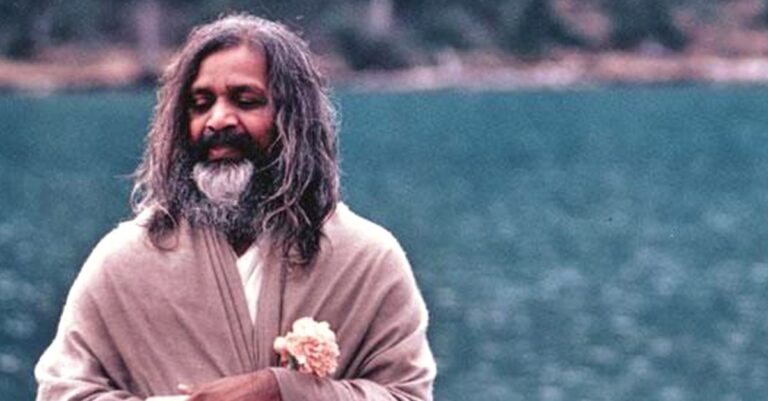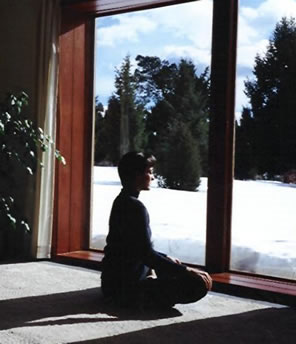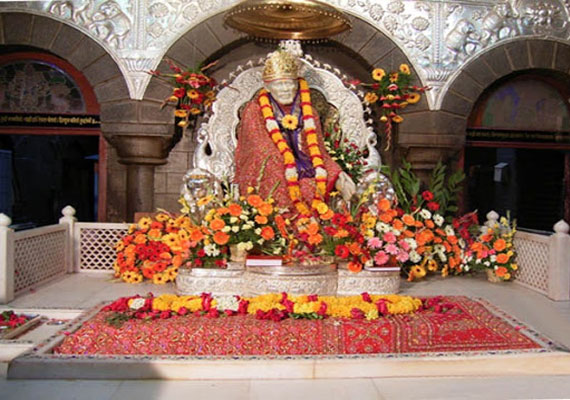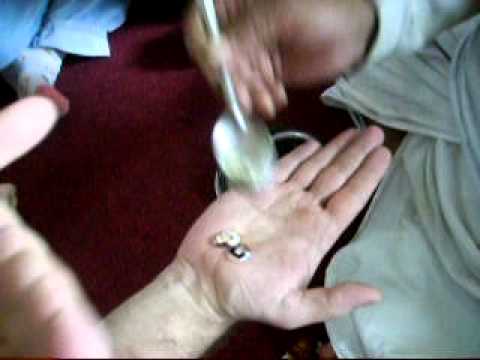Transcendental Meditation
In 1957, at the end of a big “festival of spiritual luminaries” in remembrance of the previous Shankaracharya of the North, Swami Brahmananda Saraswati, his disciple Maharishi Mahesh Yogi (or simply “Maharishi”) inaugurated a “movement to spiritually regenerate the world”. That was the formal beginning of TM spreading all over the world.
In the movement’s initial stages, Maharishi emphasised the religious aspects of TM and operated under the auspices of an organisation named the ‘Spiritual Regeneration Movement’. However, the requirements of the West made him adopt a more secular approach in the 1970s. He focussed on western science both to show theoretical parallels with his thinking and practical verification of the results of TM. The main emphasis was on relaxation, relief from stress, and improved personal effectiveness.
In the early 1970s, Maharishi launched “The World Plan” to have a TM teaching centre for each million of the world’s population, which at that time would have meant 3,600 TM centres. Many such centres were established for a time, but not all are operational now. Today, there are TM-centers and facilities all around the world, and over five million people have learned the technique. Since 1990, Maharishi co-ordinates his global activities from the town of Vlodrop in the municipality of Roerdalen in Holland.
Technique and procedures
TM is to be practised fifteen to twenty minutes twice daily while sitting comfortably in a chair. In essence, the TM technique comprises the silent mental repetition of a simple sound known as a mantra, allowing the repetition to become quieter and quieter, until it disappears and one is left conscious, but without thoughts. This is the goal of the inward stroke of meditation and is called pure consciousness (in Sanskrit: turiya or samadhi; with Abraham Maslow: peak experience). Together with the mind, the body has come to rest too, and starts to clear out “stress”. This means bodily activity, and therefore also mental activity in the form of thoughts: the outward stroke of meditation. After the purification has finished, the inward stroke starts again, etc.
Stress
In Hans Selye’s definition, stress is a neutral concept, simply meaning “load”. He distinguishes eustress and distress, roughly meaning “challenge” and “overload”. According to Selye, the physical changes during TM are the opposite of the body’s reaction to stress. (In common usage, the word stress has taken on a meaning close to Selye’s distress.)
In TM-lingo, stress is defined as “structural or material impurities resulting from overload on the physiology”, which includes both body and mind. The assumption is that it is possible to purify the physiology completely, and that that is the goal of human life, equal to gaining enlightenment. (Compare Maslow’s self-actualization.) 

The mantra
According to the TM organisation the mantras comprise meaningless sounds specifically chosen to have a soothing effect upon the individual’s nervous system. Examining the full list of mantras issued by sources disassociated from the TM movement over the years shows that each mantra names one of the Hindu gods. (It is also possible that the Hindu deities are named after mantras.) This may concern anyone who already committedly practises another religion. However, the TM organization maintains that TM does not constitute a religion and that its practice remains compatible with all faiths.
There is some controversy as to whether or not TM actually is a religion. The primary argument for TM being a religion is that it involves spirituality, and the primary argument for TM not being a religion is that it does not involve faith.
The TM organisation encourages practitioners to keep their mantra private and never to repeat it aloud, since it allegedly has the purpose of moving inwards into the ‘refined’ levels of the mind. The organisation has attempted to keep the precise method for choosing a mantra a secret, but ex-TM teachers have stated that mantra choice simply depends on the age of person at the time of initiation. They assert that if a student repeats the initiation at a later age at a different TM centre without mentioning the former initiation, the student will receive a different mantra.
TM and religion
With regard to religion, Maharishi states that:
- Religion and meditation are both necessary — “One without the other will not survive.”
- Everyone should follow their own religion.
- At its beginning, every religion included transcendental meditation.
- Now that religions have forgotten the technique, they are “like bodies from which the soul has departed”.
Refer to Science of Being and Art of Living for these points. He also discusses God, distinguishing between impersonal and personal God.
Effects and claims
The TM movement has referenced many medical and sociological studies (see the Pro-TM link for specific results and references) to strengthen the scientific acceptability of its claims, although critics have questioned the independence and methodological fitness of many of the studies. More recent research has documented certain harmful effects in a minority of long-term practitioners, including troubling physical tics, emotional volatility and inability to concentrate. The more basic claims of lowering blood pressure, decreasing cholesterol and strengthening the immune system do seem to be more robustly confirmed. Hans Selye has examined the changes measured in TM-practitioners, and found that the therapeutic effect was clearest in conditions caused by wrong ways of adapting and reacting to stress.
According to the proponents of TM, the practice helps in attaining “higher consciousness”, which every human being allegedly possesses in common, and which allegedly interacts with one’s daily choices. Proponents also assume that in daily existence, humans of flesh and blood do not stand as close to this higher consciousness as they could do. TM therefore basically aims to get closer to this consciousness. Since the higher consciousness allegedly equates to the good, people approaching this higher consciousness should more readily understand, intuitively, what ‘good’ means and will thus more likely behave well. This leans on a belief that it is desirable to act well, and undesirable to act badly, in line with arguments proposed by Plato’s Socrates in Meno and in The Republic.
In the late 1970s the claims for the TM technique and associated advanced “Siddhi Techniques” became more radical and increasingly targeted at existing adherents. Propounded benefits include a measurable decreased crime rate in cities with 1% of the population practising TM, or the square root of that number practising the TM-Sidhis program (this phenomenon being called “the Maharishi Effect”), and extraordinary effects including metaphysical levitation.
The more recent interpretations of TM’s significance mostly examine its health claims, such as reduced blood pressure and better concentration. In these areas its supporters can view TM as simply the most effective form of waking relaxation. Some of the contemporary proponents of meditation claim that it can lead to reductions in stress, hostility, illusions and attachments, and can help in treating mental illness. On the other hand, evidence exists that meditation can lead to more mental problems in psychiatric patients.
Criticism
Critics of TM assert that transcendental meditation consists simply of standard meditation as practised by many religions, and that absolutely no basis exists for anyone to claim that they invented it or spread it. Many cult researchers consider TM a cult, according to them one of the largest of the present day.
An organization called ex-TM exists for people who formerly practised transcendental meditation. This organization has the general agenda of denouncing transcendental meditation as a dangerous cult. The organization also describes the effects of TM as hypnotic.




